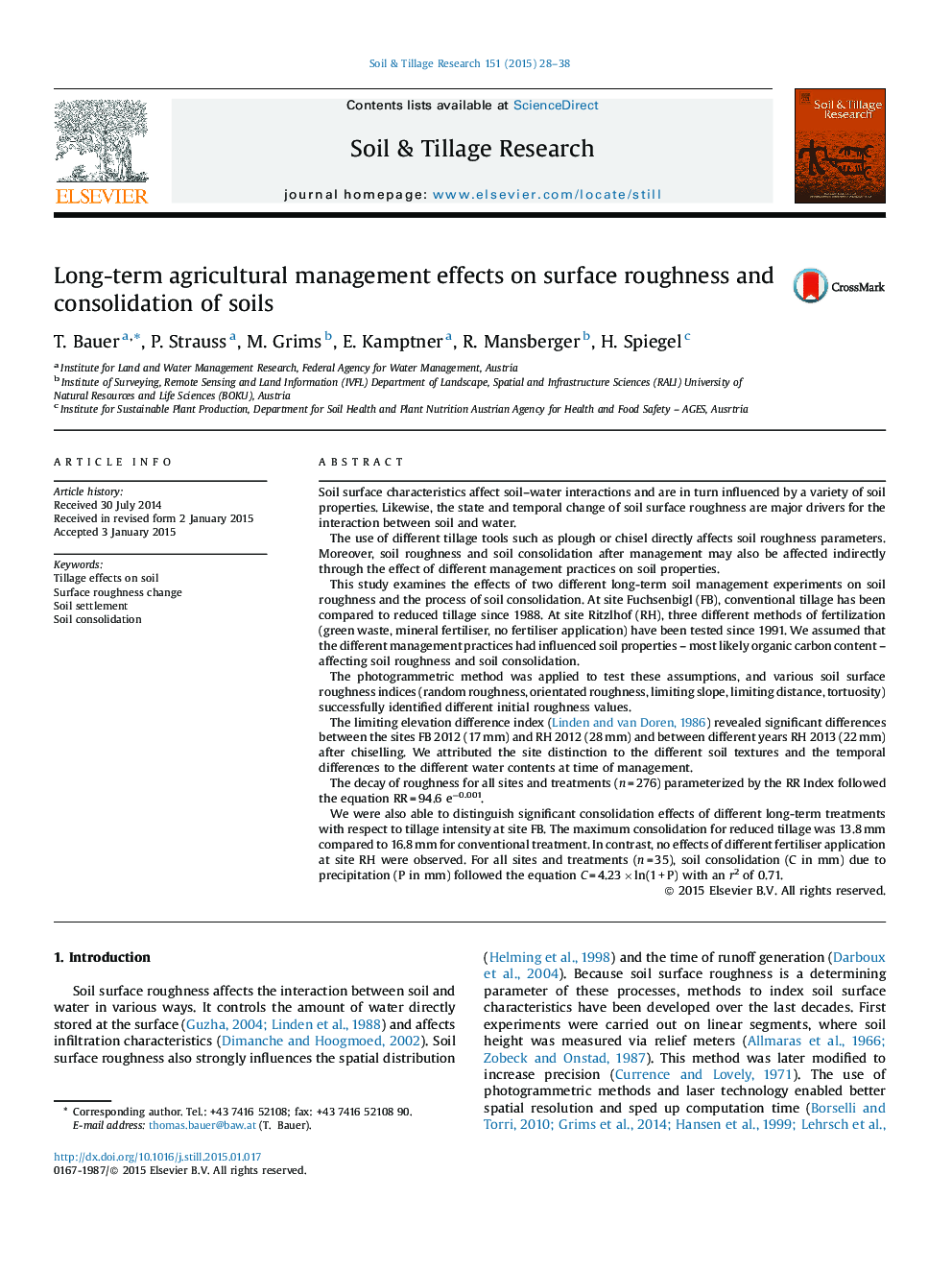| کد مقاله | کد نشریه | سال انتشار | مقاله انگلیسی | نسخه تمام متن |
|---|---|---|---|---|
| 305586 | 513036 | 2015 | 11 صفحه PDF | دانلود رایگان |

• We compared different agricultural treatments and their effects on soil surface characteristics.
• Soil surface roughness decay is depending on precipitation and soil tillage history.
• Soil consolidation after tillage is different for long-term managements (conventional vs. reduced).
• Fertiliser application has no influence on soil consolidation.
Soil surface characteristics affect soil–water interactions and are in turn influenced by a variety of soil properties. Likewise, the state and temporal change of soil surface roughness are major drivers for the interaction between soil and water.The use of different tillage tools such as plough or chisel directly affects soil roughness parameters. Moreover, soil roughness and soil consolidation after management may also be affected indirectly through the effect of different management practices on soil properties.This study examines the effects of two different long-term soil management experiments on soil roughness and the process of soil consolidation. At site Fuchsenbigl (FB), conventional tillage has been compared to reduced tillage since 1988. At site Ritzlhof (RH), three different methods of fertilization (green waste, mineral fertiliser, no fertiliser application) have been tested since 1991. We assumed that the different management practices had influenced soil properties – most likely organic carbon content – affecting soil roughness and soil consolidation.The photogrammetric method was applied to test these assumptions, and various soil surface roughness indices (random roughness, orientated roughness, limiting slope, limiting distance, tortuosity) successfully identified different initial roughness values.The limiting elevation difference index (Linden and van Doren, 1986) revealed significant differences between the sites FB 2012 (17 mm) and RH 2012 (28 mm) and between different years RH 2013 (22 mm) after chiselling. We attributed the site distinction to the different soil textures and the temporal differences to the different water contents at time of management.The decay of roughness for all sites and treatments (n = 276) parameterized by the RR Index followed the equation RR = 94.6 e−0.001.We were also able to distinguish significant consolidation effects of different long-term treatments with respect to tillage intensity at site FB. The maximum consolidation for reduced tillage was 13.8 mm compared to 16.8 mm for conventional treatment. In contrast, no effects of different fertiliser application at site RH were observed. For all sites and treatments (n = 35), soil consolidation (C in mm) due to precipitation (P in mm) followed the equation C = 4.23 × ln(1 + P) with an r2 of 0.71.
Journal: Soil and Tillage Research - Volume 151, August 2015, Pages 28–38